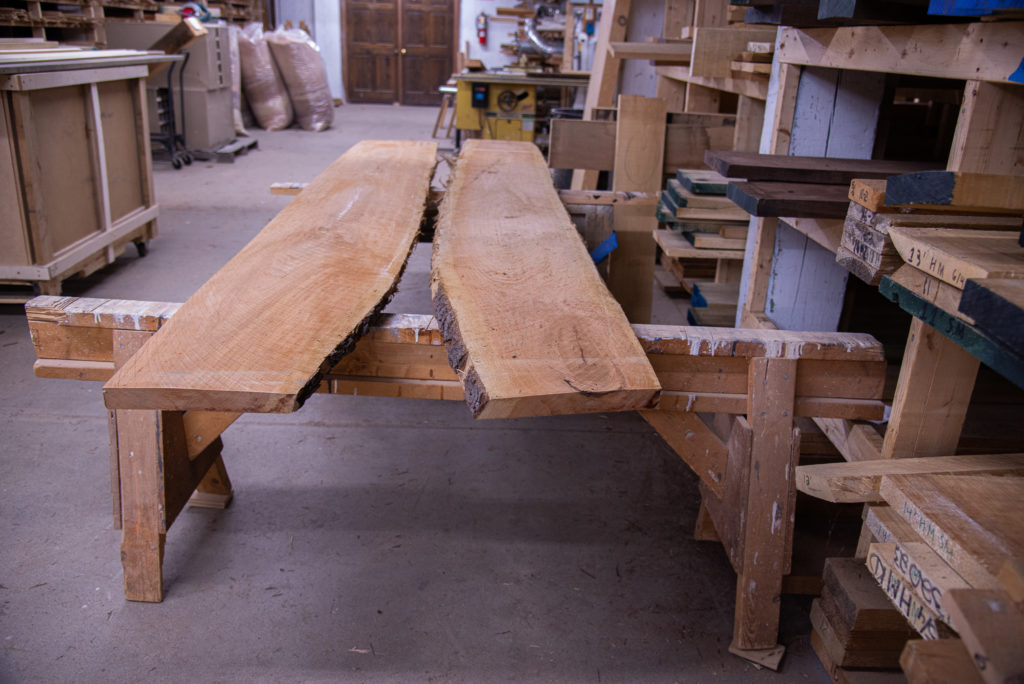Live Edge Lumber & Slabs: Out With the Old & In With the New

Back in the 1950s and 1960s, it was kind of a fad to use live edge lumber on the gable ends of ranch and split-level houses. Many people, myself included, thought this was a total mismatch of architectural styles, but it sure was big for a while. “Live edge” boards are flat sawn for the width of the log, which ideally should have a wavy pattern on one side, due to protrusions from tree branches, etc. Applied horizontally as siding, it was usually stained much darker than the color of the main siding below it, and added a rustic look to that part of the house. We still sell live edge wood, mostly for replacement of the original material on these now aging homes. I advise customers to stain and/or seal the boards on all sides and edges, preferably with oil based finishes, prior to installation. The boards being replaced have inevitably rotted from the sides or backs, which were never sealed.
Most of this is Eastern White Pine, and is usually air dried, which means it takes approximately one year per inch of thickness to dry completely. I recommend checking live edge lumber (or ANY air dried stock, for that matter) with a moisture meter, to be sure it is sufficiently dry for sealing and installation. In northern New England, live edge wood for siding is very common, often covering the entire structure. Up there, it looks a lot more appropriate than stuck on the gable end of a 1950s split-level!
Another popular item right now is live edge slabs, used for bars, shelves, countertops and furniture. These are generally a minimum of 1 1/2″ thick, going up to 4″ or more. At Barney & Carey, we obtain live edge slabs of White Pine, Cherry, Red and White Oak, and Walnut directly from sawmills. After a few weeks, we seal the ends with melted paraffin wax, and stack the boards with spacers (called “stickers”) between each row. We dry them indoors, using fans, to avoid the cracking (“checking”) and cupping that often occurs from outdoor storage. As noted above, drying can take years, at one inch per year.
Some live edge slabs have bark on the live edges. Many customers like that look, and ask us to leave the bark intact when we plane or otherwise mill the slab to their specs. I don’t recommend saving the bark, because it can be very unstable, shedding pieces as time goes by. Once in a while we will get a slab with really solid, undamaged bark, which CAN be preserved, but that is rare. We will sometimes sand the live edges heavily with a belt sander, to remove any rot or insect damage, yet completely retaining the live edge curves. One can create some unusual and beautiful tops and furniture using live edge boards and slabs. Check out our selection, which is constantly changing, for use on your project. If we don’t have exactly what you are looking for, we can get it; you just may have to wait awhile for it to dry!
